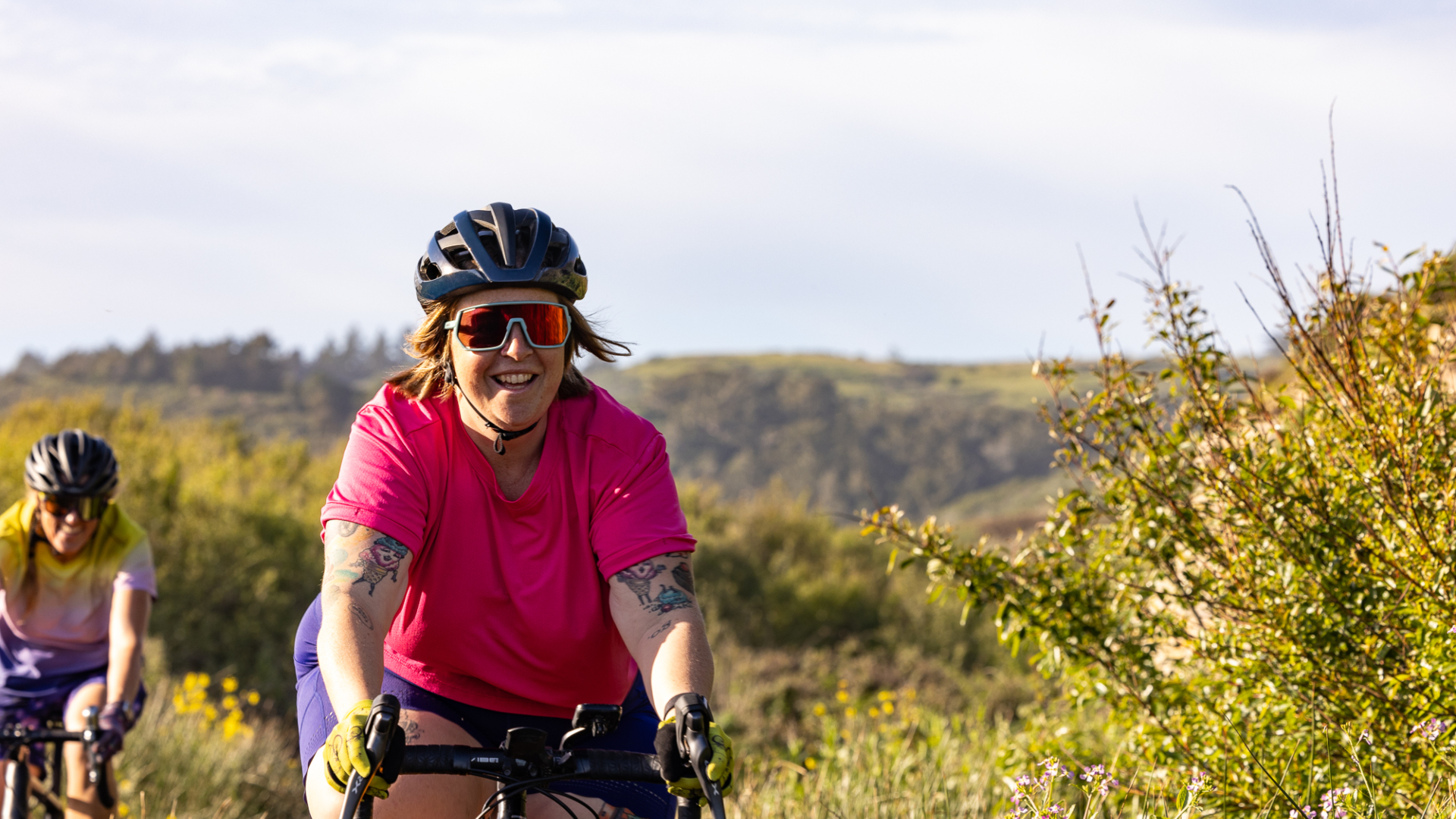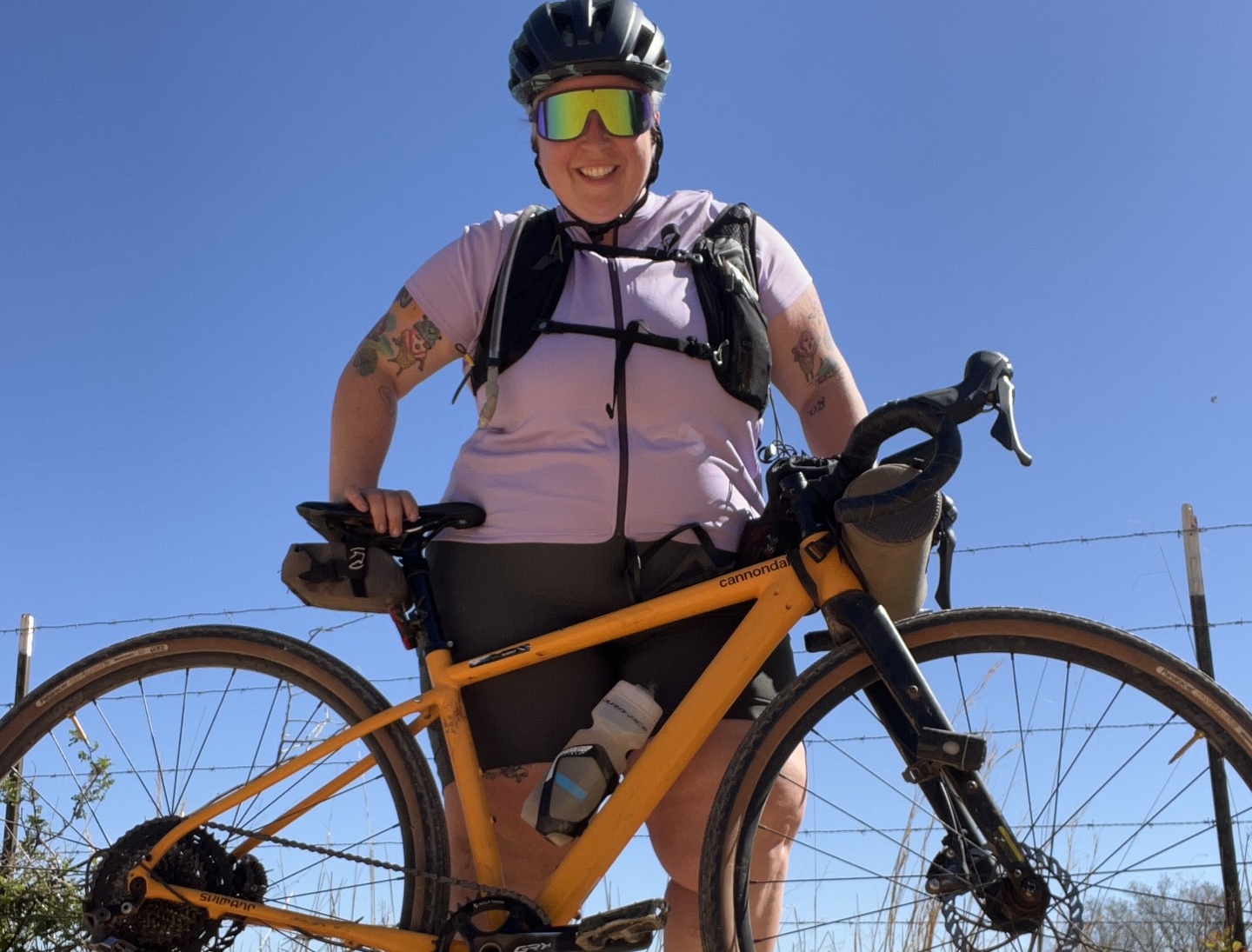I've had my share of disastrous group rides, here's how to lead a successful one
Marley Blonsky shares her tips on leading a group ride that people will want to come back to


Leading a group ride is one of the best ways you can give back to the cycling community. Group rides are an accessible, fun and often challenging (in a good way) entry point for newer cyclists looking to advance their skills, fitness or community ties.
While the physical act of leading a ride isn’t hard, planning and executing a ride that people will want to come back to takes deliberate work and intentionality. As the Co-Founder and Executive Director of All Bodies on Bikes, a group that prides itself on inclusive, social rides, I spend a lot of time thinking about group ride dynamics. After leading hundreds of group rides myself, and now training others on how to successfully lead group rides, I’ve learned a few things about how to lead a ride that people will actually want to come back to.
I’ve had my fair share of disastrous group rides - getting dropped on supposed “no-drop” rides, being led through dangerous intersections in an unsafe way, and encountering unwelcoming behavior from other riders. I know that if this is happening to me, it’s a widespread issue.
In the spirit of community, I’ve put together my best advice for leading a ride that people will want to come back to. Please note that these techniques are applicable regardless of the type of ride you’re leading, the pace you’re going, or where you’re riding.
Develop and Publicise an Appropriate Ride - Before the Ride
When developing the route for your group ride, be sure to take into consideration the goals of your ride. Is it a social ride? A fitness ride? A training ride for a specific event? Use these variables to plan how long, fast or hilly your ride will be. Be sure to take into account the elevation gain and type of terrain you’ll be riding on.
Elevation is a tricky one to navigate, as everyone climbs at different paces, however, my best advice is to limit climbing on social rides, and to absolutely regroup at the top. Don’t forget to give the folks at the back of the ride plenty of time to rest before restarting the ride.
For more spirited or training rides, climbing can be a fun way to spice things up, but be sure to regroup when appropriate. Even if there are no significant climbs, be sure to include regrouping points where the group can safely re-form, as often rides get split by traffic lights, trains, or mechanicals. Finally, on longer rides (upwards of 10 miles), I like to include opportunities to refill bottles, eat a snack, or use the restroom.
Get The Leadout Newsletter
The latest race content, interviews, features, reviews and expert buying guides, direct to your inbox!
I always recommend publicising your route using Ride With GPS, my preferred route making tool.* With the software's custom queues, points of interest and sharing functions, you can give potential attendees a wealth of information.
Publicise your intended pace - and stick to it
While I love social paced group rides, there is a time, place, and audience for fast group rides. The key is to make it clear what pace your ride will be going and stick to that. Your ride leaders should have a bike computer and do their best to stick to the advertised pace (with consideration of hills.)
I also highly recommend creating a culture where the ride leaders are the ones setting the pace —no one should be in front of the ride leader or trying to push the pace. This can be established at the beginning of the ride, when the group leader is explaining expectations. A simple “Marley is leading the ride, please don’t go in front of her. We’ll be riding at 15mph average, faster on the downhill, slower on the uphill. Please respect the pace Marley sets.”
And please, for the love of all things bikes, stop using “party pace”, “comfortable pace” or “conversational pace” without also elaborating on what this actually means. Put a number on it!
Create a Welcoming Environment
Regardless of the type of ride, folks are joining for the social aspect. As the leader, you have a role in creating that social, welcoming environment. Say hi when people show up. Introduce yourself. Encourage conversation between riders and welcome new riders by facilitating introductions.
As the leader, you get to set the vibe for the entire ride, so the more welcoming you are, the more relaxed and friendly other riders will also be. I also highly recommend a pre-ride talk just before departing, where the rider leaders, sweeps, and other leadership introduce themselves, go over the route, and any expectations for the ride.
Bonus Points - Cultivate a Social Environment Before/After the Ride
Again, many people join group rides for the social aspect of cycling. Making space for additional social time either before or after the ride will help to develop a healthy group ride dynamic that is welcoming and encourages people to come back. There are a million ways to do this, including ending at a local brewery or coffee shop for some refreshments. It doesn’t have to be complicated, but a little effort to encourage communication connections will go a long way.
*Disclosure: Marley Blonsky is a Ride With GPS ambassador.
More columns by Marley Blonsky
- I’m a fat cyclist and here’s how I made peace with climbing
- I know how it feels to finish 'dead last' - here are my tips for completing your first gravel race
- I’m a fat cyclist; these are the top 3 misconceptions people have about bigger riders and why they’re wrong
- Lip service isn't good enough: here's what needs to change for cycling events to actually be inclusive

Thank you for reading 20 articles this month* Join now for unlimited access
Enjoy your first month for just £1 / $1 / €1
*Read 5 free articles per month without a subscription

Join now for unlimited access
Try first month for just £1 / $1 / €1

Marley Blonsky is a fat adventure cyclist, co-founder of All Bodies on Bikes, co-host of the All Bodies on Bikes podcast, curve model, advocate, and consultant. Marley is fiercely passionate about size inclusion, believing that everyone deserves full access to life - including at work, in sport, and at home.